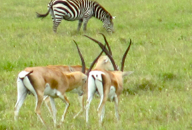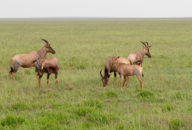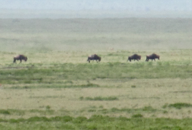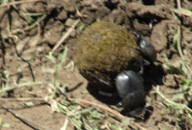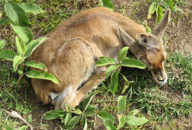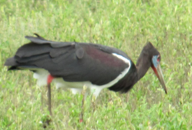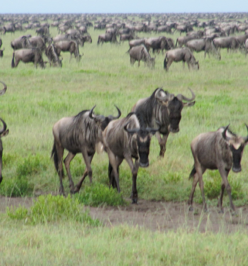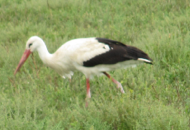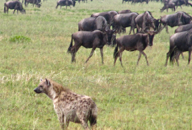SERENGETI GAME
south serengeti
serengeti National Park
tanzania, east africa
safari days 5 & 6 February 23 & 24, 2010


SERENGETI GAME
south serengeti
serengeti National Park
tanzania, east africa
safari days 5 & 6 February 23 & 24, 2010


On the vast landscape of the Serengeti Plain, Henry and I had to accustom our eyes to distant movement, helpful with a great pair of binoculars thoughtfully provided by African Dream Safaris. Of course, Wilfred’s great eyesight, knowledge of the animals, and experience as a game driver helped us see so many of these shy animals, like the various species of antelope, especially the Eland. What was equally amazing was his knowledge of the vegetation and birdlife that was intrinsically woven into the eco-system that is the Serengeti. While driving fast across the open plain, Wilfred would occasionally brake, then tell us to look somewhere specifically, only to be amazed at the miniscule creature he had seen and brought us to encounter. Every day was special as there was always an abundance of game to see, each specific to their locale. What looked like a vast empty land, turned out to be an area teaming with life, each species well-camouflaged for protection.
Day 5: From Ndutu to Naabi Hill across the Serengeti Plain
We began our day in the wetlands, watching storks wading in the Ndutu River and flamingos taking flight from the lake. Hartebeests grazed and their fawns chased one another, playfully springing sprightly. Grant Gazelle herds, as well as zebras grazed on grasses, and wildebeests with new calves entered the woodland area en masse, stampeding at first as they kicked up clouds of dust. We paused to capture photos of the birth of a zebra on the edge of the woodland, then turned our attention to the giraffes feeding on the tops of Acacia trees. From the woodlands we drove to the Serengeti Plains, leaving the Serengeti National Park boundary as we headed in the direction of the Gol Mountains. Huge expanses of cropped grasslands stretched before us, with a herd of 9 Eland, a rare and enormous antelope, visible in the distance. We spotted five hyenas, plus saw our first family of hyena in their den. The highlight of the day included: Birth of a Zebra , Masai Quest, Nasera Rock and Massai Village, each a separate webpage. We returned in the evening to Naabi Hill where we stayed as the only guests of the Serengeti Luxury Tented Camp overlooking the Serengeti Plain.
Day 6: Naabi Hill across the Serengeti Plain for a Day of the Big Cats
Henry and I thought by safarai Day 6 we had seen all there was to see on the Serengeti Plain, and put in a request to move on to the Ngorongoro Crater. But Wilfred discouraged that move, and we were intelligent enough to listen to our guide. What he had in store for us on Day 6 was a prowl around the Gol Kopjes in the direction of the Gol Mountains across the plain. Here we saw what he was looking for: a world of cats ... cheetas and lions. Henry I were both thrilled with our adventure, so happy to have taken his advice. The photographs and story can be found in the separate webpage: Big Cats. Another page reveals the lives of the vultures and hyenas, entitled The Scavengers.
PHOTOS: Left Column: 1. A small line of wildebeests on the horizon. 2. A herd of Topi Antelopes on the plain. 3. Zebras and wildebeests crazing on the Serengeti Plain. 4. Grant’s Gazelles and zebras grazing on the Serengeti Plain. 5. An Abidin’s Stork, a black feathered stork that follows the wildebeest migration. 6. A tiny Thompson’s Gazelle “playing possum”. Wilfred told us his mother went off to graze and instructed him to stay still and don’t move for anything or anyone as a defense strategy. Center, Top: A lone male lion sunning himself on top of kopjes. The granite rock formations were strewn about the Serengeti Plain during volcanic eruptions millions of years ago. Center, Middle: A Thompson’s Gazelle with migrating wildebeest on the horizon in the background. Center, Bottom: A huge herd of wildebeest grazing on the Serengeti Plain and moving in our direction. We would see hundreds of thousands of these animals, often as far as the eye could see, stretching to the horizon. Right Column: 1. A line of wildebeests on the move. The Gol Mountains are in the background. 2. A herd of Eland Antelopes, large, boxy creatures, grazing on the Serengeti Plain. 3. A hyena and the wildebeests on the plain. 4. A golden jackal hunting for rodents, reptiles, and other small mammals. 5. A White Stork hunting for snakes, reptiles, and insects, rustled up by the passing migration of zebras and wildebeests. 6. A pair of dung beetles pushing a ball which will eventually end up in a hole. This is where they lay their eggs, the dung being the first meal of the hatched insects.

Macro to Micro

